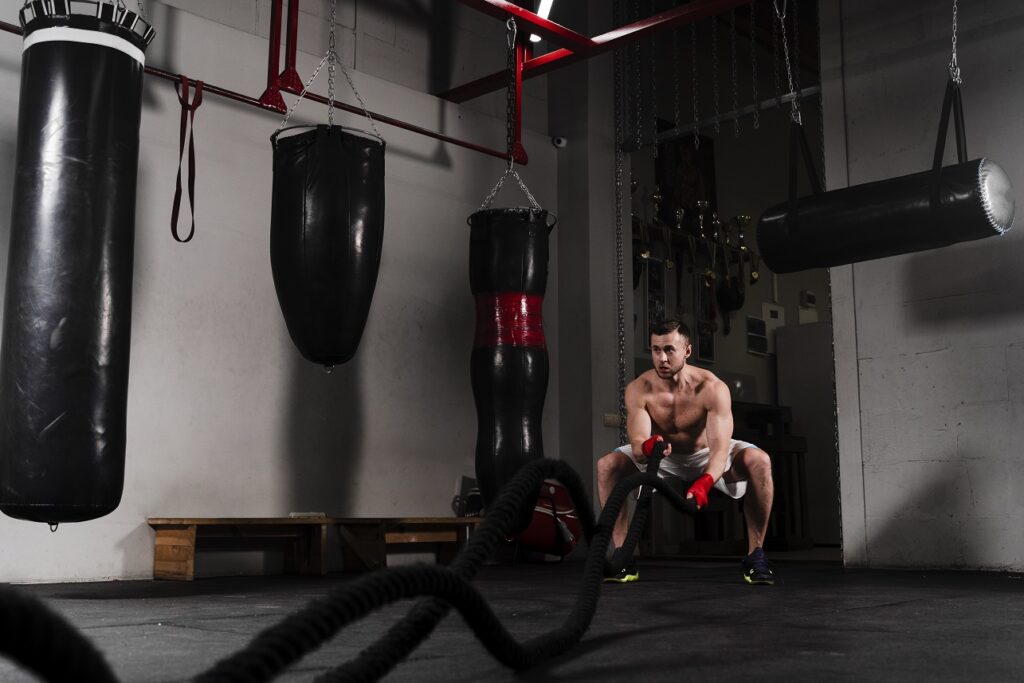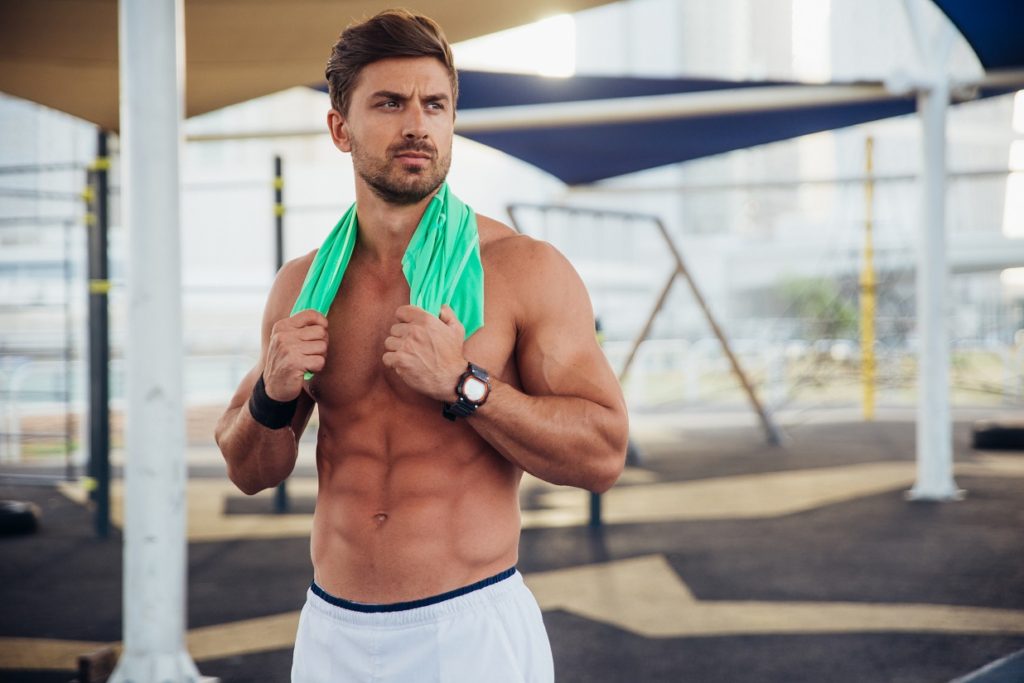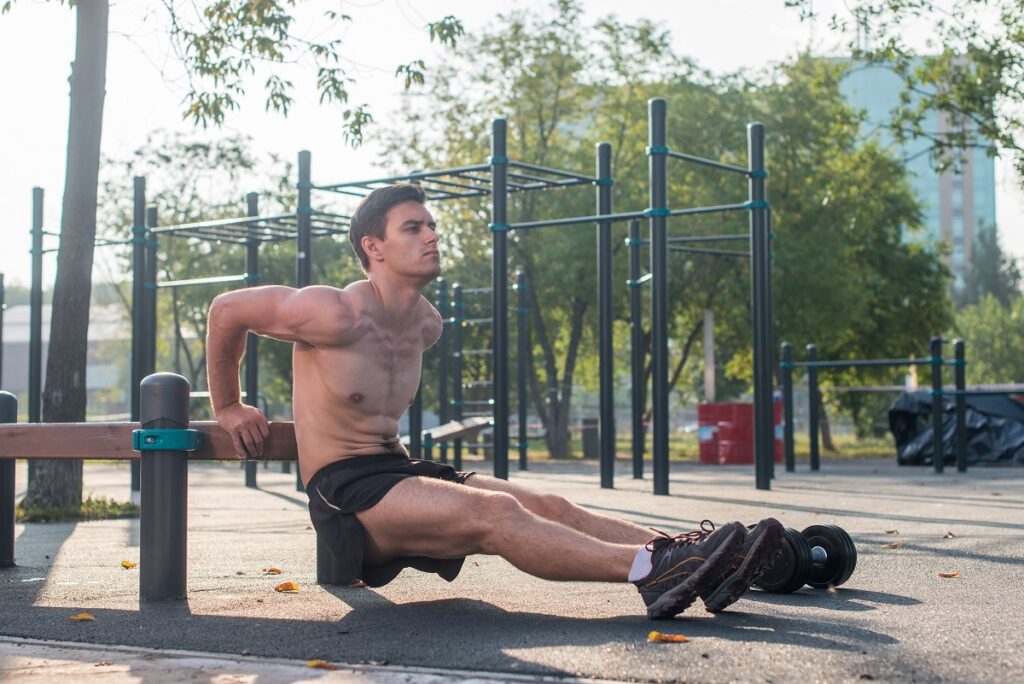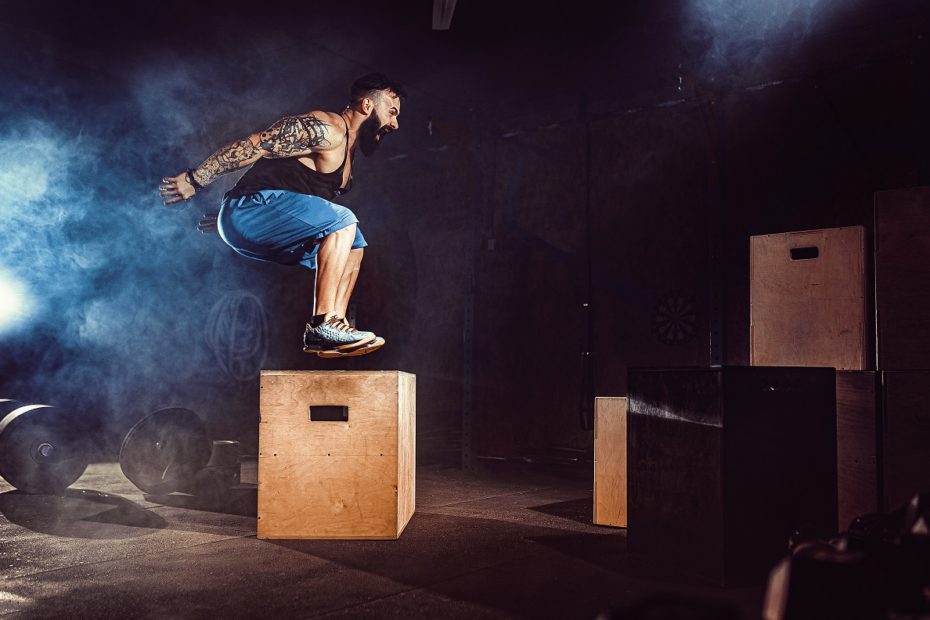Disclosure: This post contains affiliate links. Meaning if you click on a link and make a purchase, I'll earn a small commission at no extra cost to you.
If you’re looking for a definite answer to which is better ‘circuit training vs HIIT’… then this is the most important page you’re ever going to read.
Now there’s a lot of misconceptions about circuit training and HIIT. And both terms get thrown around in the fitness industry without any real understanding of what they actually mean.
And while I’ll admit that there are a lot of similarities between the two, there are also a few very subtle differences that separate them.
Now, I’m not saying one is better than the other because the one that suits you best is ultimately going to depend on your training goals.
So it’s in your best interest to learn exactly what each one entails so you can take advantage of the benefits and pitfalls of each.
Which is why in today’s blog post, I want to give you a side by side comparison of what both circuit training and HIIT have to offer. So you can ultimately decide which is best for your needs.
Oh, and if you’re just looking for some killer workouts that incorporate both circuit training and HIIT. Then I’d highly recommend checking out Workout Finishers 2.0 by Mike Whitfield.
Just to give you a little more info, Mike’s developed what most people would consider the holy grail workouts that strike the perfect balance between the two.
Better still, it’s relatively cheap, and you’ll literally have hundreds of strategically crafted workouts at your disposal that’ll turn you into a lean, mean, fat-burning machine.
Anyway, here’s the link to take a look: Workout Finishers 2.0

Destroy Workout Plateaus and TRASH Boring and Outdated Interval Workouts with 51 NEW and Never-Seen-Before Metabolic Finishers and 119 Guaranteed-to-Get-You-Shredded Exercises.
Workout Finishers Expert Mike Whitfield introduces his breakthrough “Metabolic Stacking” training to help you torch body fat and smash any plateau in as little as 3 minutes
Table of Contents
Circuit Training Vs HIIT – What Are The Benefits?
Benefits Of Circuit Training
Now, circuit training has been around since the dawn of time. And it involves performing multiple exercises one after the other (usually 6 or more).
However, the difference with circuit training is that this can be done using either a set number of repetitions per exercise…
…Or using timed intervals.
So, for instance, you could perform a circuit of, let’s say…
- Pullups (5 reps)
- Dips (10 reps)
- Squats (15 reps)
- Bodyweight Rows (10 reps)
- Pushups (20 reps)
- Lunges (10 reps each side)
And this would be considered a circuit that you could perform over a set number of rounds.
However, you could take the same set of exercises and perform them within timed intervals. And it would still technically be considered a circuit.
Like this…
- Pullups (30 seconds)
- Dips (30 seconds)
- Squats (30 seconds)
- Bodyweight Rows (30 seconds)
- Pushups (30 seconds)
- Lunges (30 seconds)
The only difference with timed intervals is you don’t have as much control over the total number of reps you can push out within the set time limit.
Now, although you can string together any combination of exercises and call it a circuit. This doesn’t mean that it has to be high intensity.
The benefit here is that circuit training actually gives you the flexibility to put together an effective workout that’s focused more on muscular endurance, size, strength, or a combination of all three.
And because you’re not always bound to a timer, you have a little more freedom to work within specific rep ranges or even train to failure if it ties in with your goals.

Benefits Of HIIT
HIIT training, on the other hand, is based around timed intervals at high intensity.
And although circuit training can be done in this fashion with timed intervals. The main difference is that HIIT training MUST be done at high intensity, whereas circuit training doesn’t.
This is where HIIT tends to separate itself from circuit training. And because of this, your workout should ideally incorporate more cardiovascular based exercises like…
- Burpees
- Sprints
- Punch out drills (on the heavy bag)
These are the kind of exercises that will elevate your heart rate to a high enough level to be considered true HIIT. Because not only are they fast-paced, they require a lot more total-body effort to pull off successfully.
This isn’t to say that strength-based exercises like squats can’t elevate your heart rate. But if you want to get the most bang for your buck when it comes to HIIT training, then you need to weigh up the options carefully.
Now, because the intensity of HIIT training is high. The main benefit is it keeps your heart rate in that all-important fat burning zone.
And when this happens, it also significantly increases your Vo2 max (maximum oxygen consumption) during your workout.
This is why HIIT is often favored over other training methods. Because put simply, your body is constantly having to play catch-up to get your oxygen levels back to normal.
Which is also why your metabolic rate increases so much well after the workout is over. Also known as excess post oxygen consumption (EPOC).
Another benefit is that HIIT training is relatively short. And if you do it right, you can get in a quick workout that lasts anywhere from 3 minutes all the way up to 30 minutes, depending on how you plan it out.
Now, just to be clear (and speaking from personal experience). 30 minutes is probably the maximum amount of time you could perform HIIT before it starts to lose its intensity.
You’ve probably seen a lot of hour-long fitness videos online nowadays that claim to be HIIT.
And while I’m not knocking these types of workouts, the reality is that most of them don’t reach anywhere near the level of intensity needed to be considered true HIIT.
So to quickly recap…
- HIIT should be intense.
- It should generally involve more cardiovascular based exercises to keep the heart rate elevated. (although when planned correctly, other exercises can be applied)
- It shouldn’t last more than 30 minutes. (any more, and it starts to lose its impact).
Moving swiftly on…

Circuit Training Vs HIIT – Which One Is Better?
This is a bit of a tricky question because which one is better is ultimately going to depend on a few factors.
So first you need to consider…
- What are your goals?
- How much time do you have available?
- What do you want your end results to look like?
But as a general guideline, here’s what I’d recommend for the following…
Best For Fat Loss
If fat loss is your main concern, then both circuit training and HIIT would be ideal.
However, from a pure fat loss standpoint, the stress HIIT places on your body and the metabolic afterburn it provides would steer me towards adopting this style of training to get the job done.
Again, this isn’t to say that circuit training isn’t a close second. But you can’t deny that the exercise post oxygen consumption (EPOC) that comes with HIIT is more than enough to give it the stamp of approval.
Best For Cardiovascular Fitness
Both circuit training and HIIT are more than capable of greatly improving your cardiovascular fitness.
But the type of cardio you need is, again, going to depend on your goals.
Let me explain…
So there are two types of cardiovascular fitness.
There’s aerobic: which is the ability to perform an exercise with the presence of oxygen. For instance, a long-distance runner controlling their breathing pattern during a race.
And then there’s anaerobic: The ability to perform an exercise without oxygen. For example, running a 100-meter sprint or throwing a flurry of hard, fast punches on the heavy bag).
Now, all exercise requires some degree of both aerobic and anaerobic capacity.
But if the end goal is to improve your aerobic threshold. Then a longer, less intense circuit workout should be your go-to option.
On the flip side, if hell-bent on getting a kick-ass workout and bringing your anaerobic threshold up to near superhuman levels. Then a short, intense HIIT workout is just what the doctor ordered.

Best For Building Muscle
Now, let me just start by saying that if your ultimate goal is to pack on slabs of lean muscle, then there has to be an element of strength training to your regular routine. Otherwise, you’ll be facing an uphill battle.
So here’s my take on the situation…
If you’re already involved in some sort of muscle building or strength training program. Then HIIT is the perfect addition to your already awesome routine.
Because not only does HIIT burn huge amounts of fat. But because it’s short and intense, it’s also very good at keeping your body in an anabolic (muscle building) state.
However, if strength training isn’t really your thing, and you’re just looking for something quick and effective to add a little lean mass and give you a quick muscle pump. Then circuit training (executed correctly) is an ideal option.
Just to give you a quick example…
I regularly perform a basic bodyweight circuit that consists of nothing more than pullups, dips, pushups, squats, and a little bit of ab work to cap things off.
And while it’s not going to get me looking like the hulk anytime soon. I’ve personally found it great for building a little lean muscle while also giving me a great cardio workout.
It looks like this…
- Wide Grip Pullups (15 reps)
- Leg Raises On Parallel Bars (20 reps)
- Rest 30 seconds
- Parallel Bar Dips (25 reps)
- Close Grip Chinups (15 reps)
- Pushups (40 reps)
- Split Squats (25 reps each side)
Rest 3 minutes and repeat 2 more times (3 rounds total)
It looks ridiculously basic, I know. But I think you’ll be surprised at how much it’ll benefit your muscle-building, fat-burning, and cardiovascular fitness if you give it the time it deserves.

Taking Your Workout To The Next Level
If I’ve done my job correctly, you should now have a pretty good understanding of the difference between circuit training and HIIT.
The only thing you need to do now is to put together an effective plan of action to go out and smash your next workout.
But before you do, here’s a little something that’s going to put the icing on the cake…
It’s called Workout Finishers 2.0 by Mike Whitfield.
Again, this simple yet highly effective training guide is the creme de la creme if you’re looking to get the most out of your training. And comes with 51 intense metabolic workouts that’ll take you anywhere from 3-25 minutes to complete.
Better still, it comes with a sh*t ton of bonus material, workout demonstrations. And basically everything you’ll ever need to keep your workouts interesting for years to come.
Now, I’m not going to lie and say that this is for everyone because the truth is, you’re gonna have to dig deep and put the work in if you want to see results long term.
But if you’ve got the stones to give some of these workouts a try, I think you’ll be pleasantly surprised at how much you can benefit from them.
Anyway, if you’re hell-bent on getting in the best shape of your life without wasting weeks or even months of trial of error trying to figure out what works…
…Then here’s the link to take a look: Workout Finisher 2.0

Destroy Workout Plateaus and TRASH Boring and Outdated Interval Workouts with 51 NEW and Never-Seen-Before Metabolic Finishers and 119 Guaranteed-to-Get-You-Shredded Exercises.
Workout Finishers Expert Mike Whitfield introduces his breakthrough “Metabolic Stacking” training to help you torch body fat and smash any plateau in as little as 3 minutes
